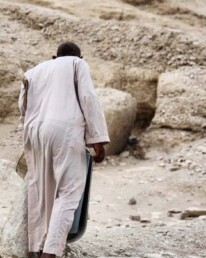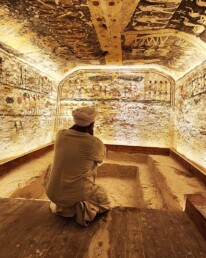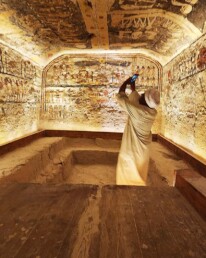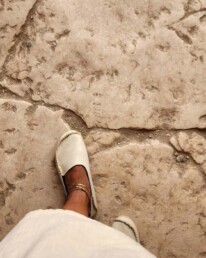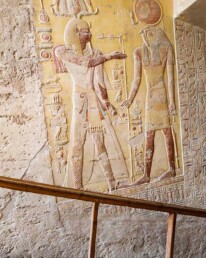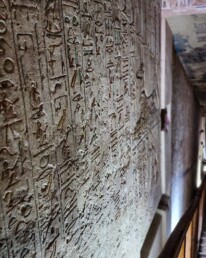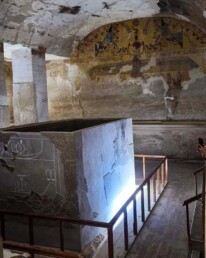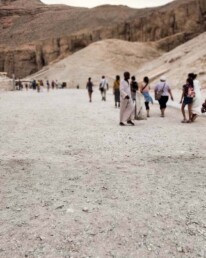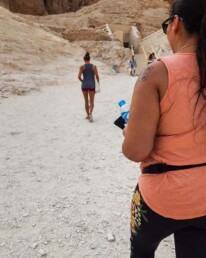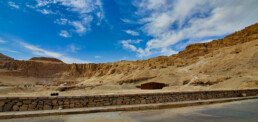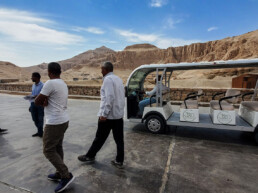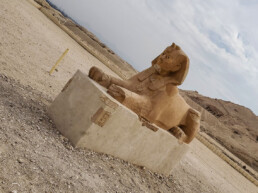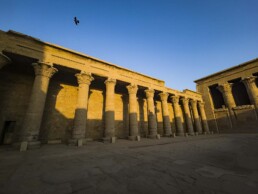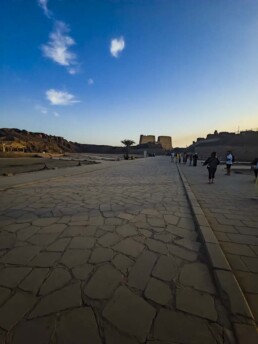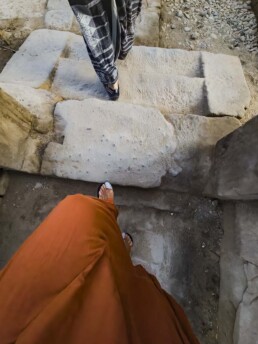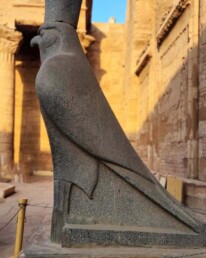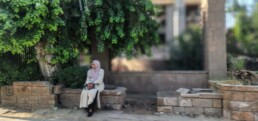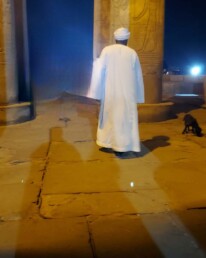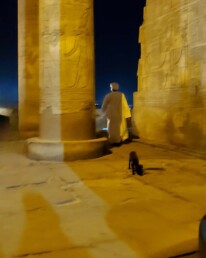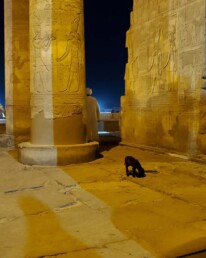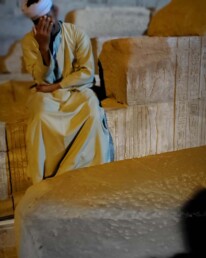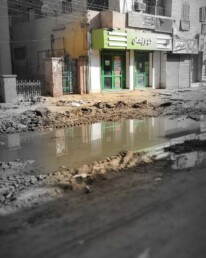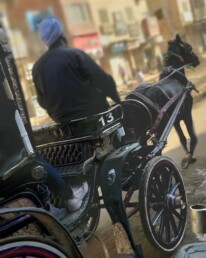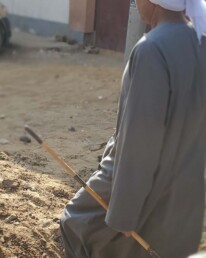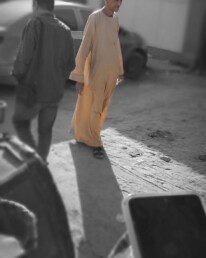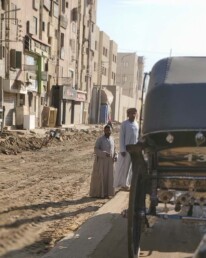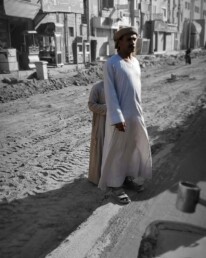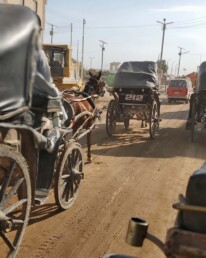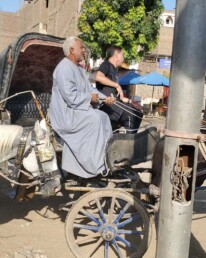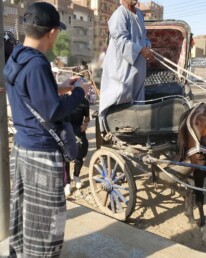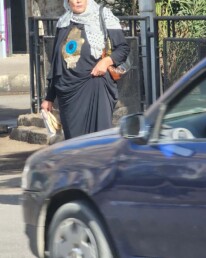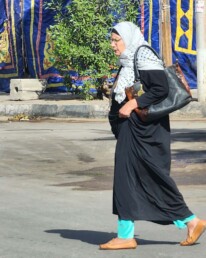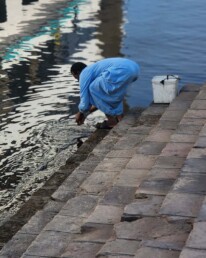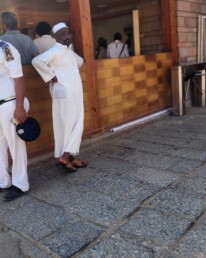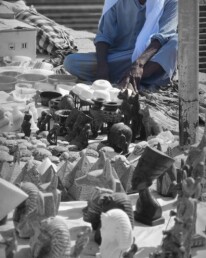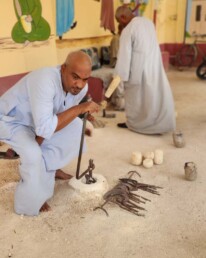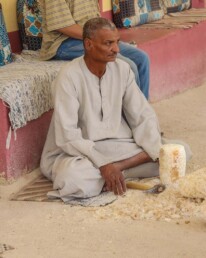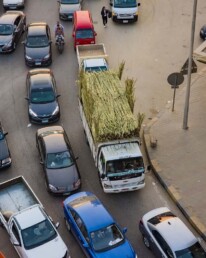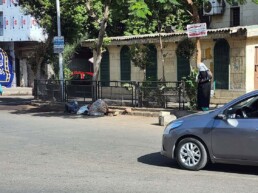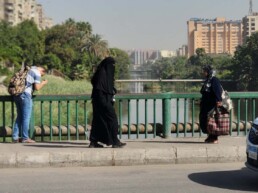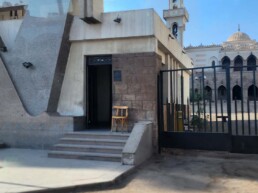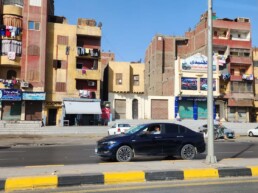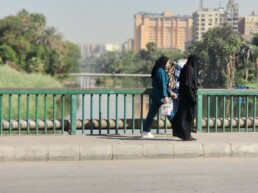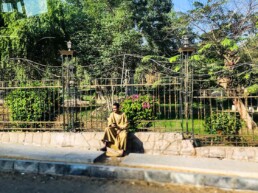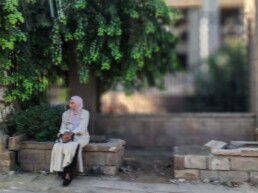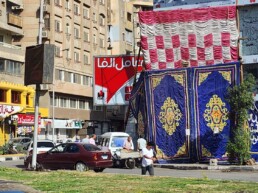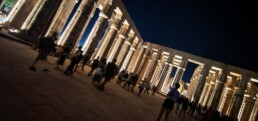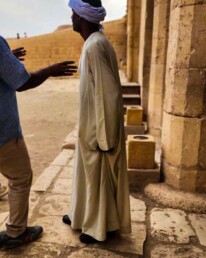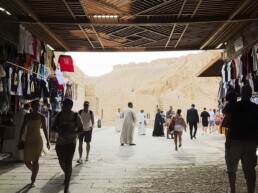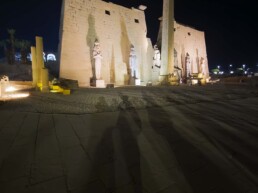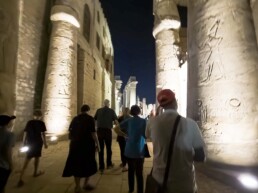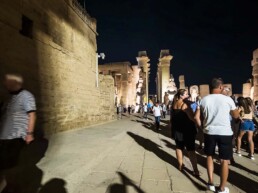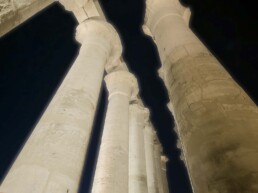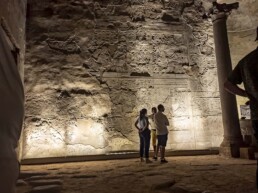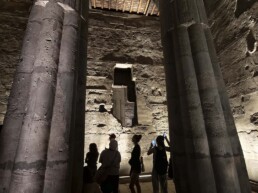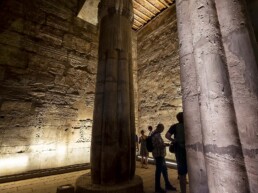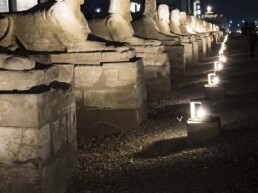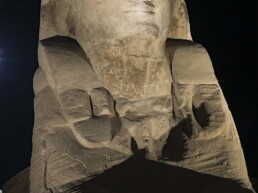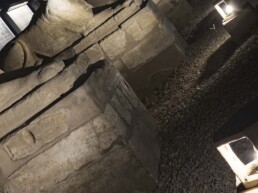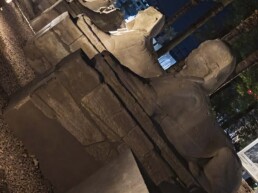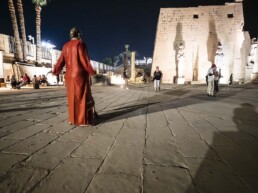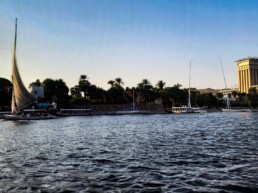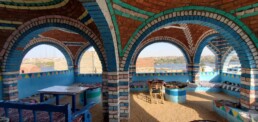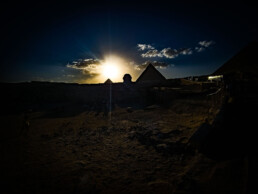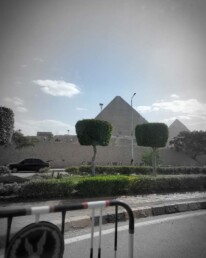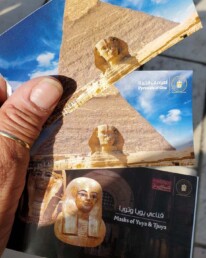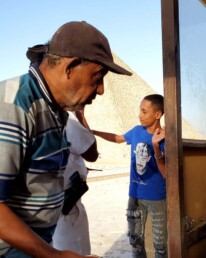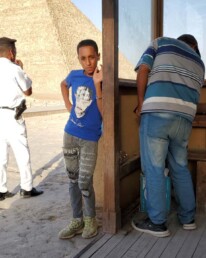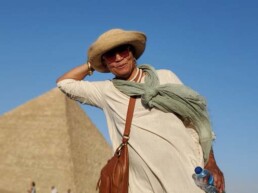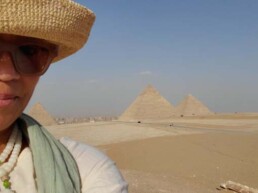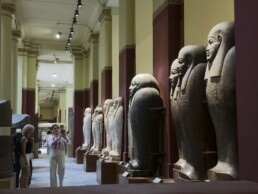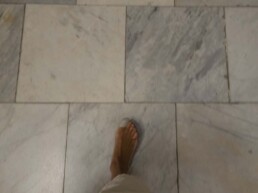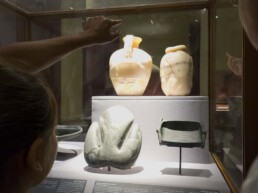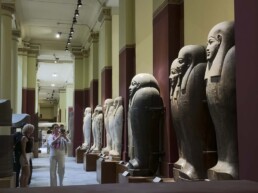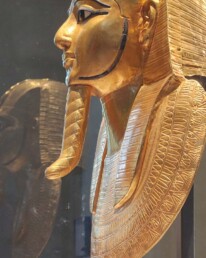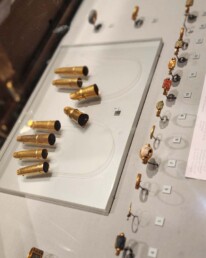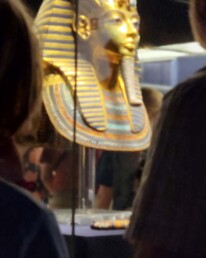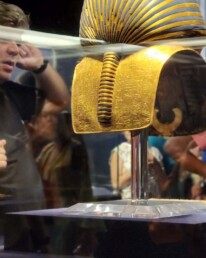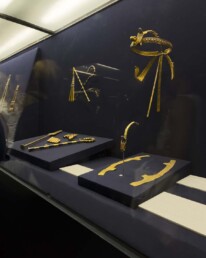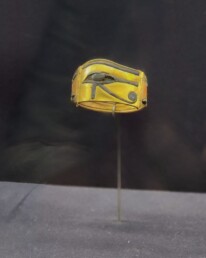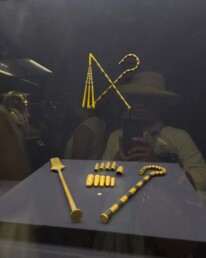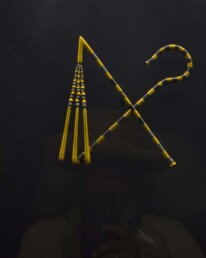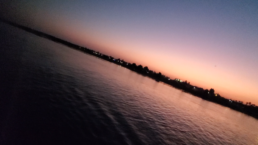Kings Valley
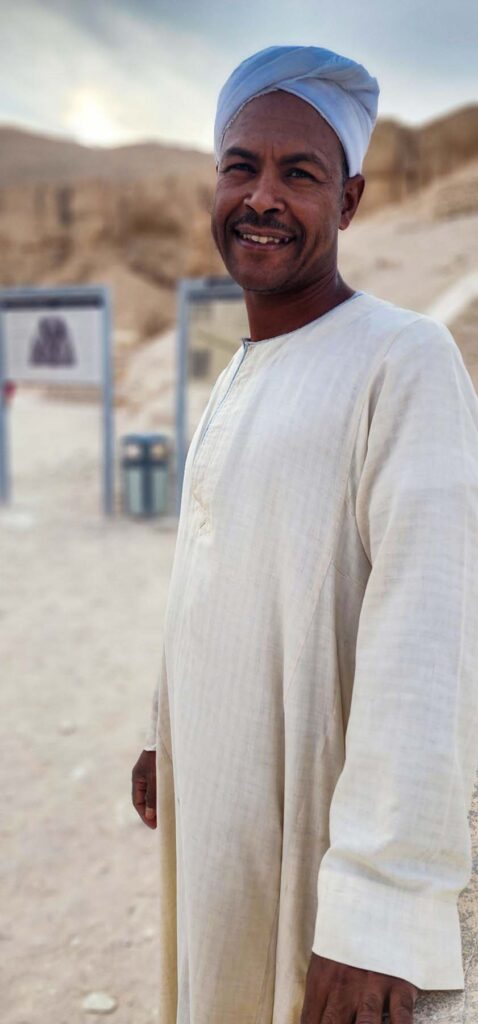
This is why I say Egypt is a massive cemetery. The rocks, pyramids and sandstone are ancient burial sites.
The Valley was used for primary burials from approximately 1539 BC to 1075 BC. It contains at least 63 tombs, beginning with Thutmose I (or possibly earlier, during the reign of Amenhotep I) and ending with Ramesses X or XI, although non-royal burials continued in usurped tombs.
Despite its name, the Valley of the Kings also contains the tombs of favorite nobles as well as the wives and children of both nobles and pharaohs. Therefore, only about twenty of the tombs actually contain the remains of kings. The remains of nobles and of the royal family, together with unmarked pits and embalming caches, make up the rest.
I only entered the tomb of Queen Valley of the Kings, Queen Hatshepsut and then sat talked to Ahmed while I waited for the group to finish.
Thankfully, weather was comfortable and agreeable. Touring these ancient tombs in 100 degrees would not have been as pleasant an experience. Neither Ahmed, nor I would have been smiling.
Mortuary Temple of Hatshepshut
This temple was built for the 18th dynasty Pharaoh Hatshepsut, the longest reigning female pharaoh, regarded by historians as one of the most successful leaders of Ancient Egypt and as the “first great woman in history“.
The sanctuary is a mortuary, or memorial, temple, constructed in honor of the pharaoh under which it was built. Despite being around 3500 years old, its long colonnaded terrace almost looks like contemporary architecture, and the elegant symmetry contrasts strikingly with the rugged cliff face that looms above it.
Temple of Hatshepsut is located opposite Luxor, on the west bank of the Nile, famous as the site of thousands of years of royal burials during Ancient Egypt.
The temple was vandalised by Haptshepsut’s stepson Tuthmosis III and the early Christians, amongst others. Many of the artifacts and reliefs at the funerary temple of Hatshepsut, the most successful female pharaoh of ancient Egypt were destroyed, after the queen’s death, by her successor, Thutmose III, in attempts to obliterate her memory.
Click the Image to Expand the Gallery
Horus Temple At Edfu
Wednesday was the breakneck day. We visited a minimum of four (4) ancient temples, used horse-drawn carriages, two different bus transports and a water taxi to cross the river and avoid the city traffic and make it to the last temple before closing at 4pm.
The morning started at 7am and the Temple of Edfu, located on the west bank of the Nile in Edfu, Upper Egypt. It is one of the best preserved shrines in Egypt and was actually used as a community home during ancient times. Our guide pulled out a 50 pound bill to show that the face of the bill reflected the temple face.
A magnificent structure, to say the least.
The day was so packed, the fearless trip leader wore a T-Shirt admonishing all at the start, “Today was not the day” for foolishness, tardiness or haphazard forgetfulness.
For more than 200 years, the structure was buried under almost 40 feet of desert sand and silt from the Nile, which helped to preserve it. This is why the financing and construction of the Aswan Dam was so crucial to Egypt.
This is the largest temple dedicated to Horus, one of Egypt’s most important historic deities, statues of the falcon-headed god are found throughout the complex, and its extensive wall carvings have provided valuable information to historians about the Hellenistic period of Egyptian history: the exquisite reliefs gave insight into the religion, mythology and way of life during the era.
Street Scenes | Egypt At Work
Work was not easy for anyone; be they adults or children. Everyone is working for pennies on the dollar. The landscape, terrain and the economy is rough around the edges for the average person.
There is beauty in the chaos and the sense of peace is apparant.
Four Temple Wednesday
Luxor Temple
The Southern Sanctuary – is considered to have held a great significance to the Feast of Opet. This annual religious festival involved a procession of the statues of the deities Amun, his wife Mut, and their child Khonsu, from the other grand temple complex in ancient Thebes: Karnak.
During earlier celebrations of Opet, the procession between Karnak and Luxor would take place along the famous Avenue of the Sphinxes. This one-and-a-half mile stretch of road is thought to have been home to around 1350 statues of human-headed sphinxes. Some of the sphinxes have been and excavated, and can be seen near the entrance to the Karnak temple complex.
The ancient sandstone of this temple literally glowed gold in the light of the sunset and created the most beautiful, mystical shadows.
Karnak Temple
A massive Ancient Egyptian temple complex that was one of Egypt’s most important places of worship under the rules of Hatshepsut, Seti I, Ramesses II and Ramesses III. As well as the dominating Temple of Amun-Ra, Karnak is also made up of smaller chapels and sanctuaries dedicated to other deities, as well as grand halls, docks, a sacred lake. and pylons – the monumental gateways that mark temple entrances.
The other two temples visited this day were Temple Sobek and Kings Valley. Check those visuals as well.
The Nile River
The Nile; a river whose basin covers 10 percent of the African continent and which is an essential resource for 500 million people living in its vicinity. All water bodies are beautiful to behold, calming to experience and joyful to play in, however, like the rest of the world, global warming and overuse of the resource threaten Africa’s longest river.
This article speaks to the issue.
“Global warming and overuse by humans is putting the world’s second-longest river under strain. In the past 50 years, the flow of the Nile has fallen from 3,000 cubic metres per second to 2,830. A lack of rainfall and increased droughts expected in East Africa means river flow could fall by 70 percent by 2100, according to UN forecasts.
The world body has predicted a loss of 75 percent of available water per local inhabitant. Related land erosion, crop loss and lack of electricity are also likely to have a dramatic impact on the millions of people living in Africa who rely on the river for survival.”
‘Those with the least water will have even less tomorrow’
Read More
I’ve known rivers.
I’ve known rivers ancient as the world and older than the flow of human blood in human veins.
My soul has grown deep like the rivers.
I bathed in the Euphrates when dawns were young.
I built my hut near the Congo and it lulled me to sleep.
I looked upon the Nile and raised the pyramids above it.
I heard the singing of the Mississippi when Abe Lincoln went down to New Orleans, and I’ve seen its muddy bosom turn all golden in the sunset.
I’ve known rivers:
Ancient, dusky rivers.
My soul has grown deep like the rivers.
Langston Hughes
Nubian Village
Like an escape back in time, the Aswan Nubian Village was all natural, all black and a pure, unadulterated African enclave.
I basically had the small boat to myself on the transfer from the cruise ship to the small village across the Nile. The LOVE Boat captain played Bob Marley down the river all the way to the Nubian Village and encouraged me to go up on top of the boat for grander vista views of the Nile.
Once we arrived, we were welcomed for tea in the home and personal space of Ms. Malak. All the residents of the village are basically entrepreneurs sharing their lives and work with tourists.
This could not have been missed. Not one second of it.
Nubian Village
Leaving the Aswan Port
Arriving at the Village
Giza Pyramids
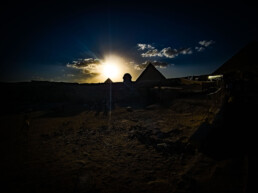
Breathtaking. Pure and simple.
Upon arrival from the airport, one can immediately see the complex. From my hotel pool deck, on the last night, the Giza complex remained in full view and majesty.
The Giza pyramid complex, also called the Giza necropolis, is the site on the Giza Plateau in Greater Cairo, Egypt that includes the Great Pyramid of Giza, the Pyramid of Khafre, and the Pyramid of Menkaure, along with their associated pyramid complexes and the Great Sphinx of Giza.
King Tut & The Egyptian Museum
The Egyptian Museum required a full day and maximum attention. The museum is the oldest archaeological museum in the Middle East, and houses the largest collection of Pharaonic antiquities in the world; displaying an extensive collection spanning from the Predynastic Period to the Greco-Roman Era.
The Egyptian Museum is located on the edge of Tahrir Square, Cairo’s most central and most famous public plaza and ginormous traffic circle. The site of the peoples’ uprising in 2011.
We spent approximately 90 minutes on the first floor alone, following our guide through the artifacts, sarcophagi, and ancient treasures of Egyptian culture. The image gallery to the right features a few of the pieces that caught my eye and attention.
The Sphinx of Pharaoh Hatshepsut, in particular, which sat broadly in the center ailse of the museum. The Egyptians believe that the sphinx was a representation of their solar deity, Sun God, Horus of the Horizon and symbolized royalty and sacred status.
Click Any Image | Open for More
The second floor housed the treasures found in the tomb of King Tut. A massive number of artifacts and treasures of King Tut’s tomb. British archaeologist Howard Carter and his patron Lord Carnarvon discovered a new and nearly undisturbed tomb in 1922 that turned out to be that of the boy pharaoh Tutankhamen, who ruled for about 10 years and died when he was only about 19 years old.
Because he died so young and his tomb had to be rushed, it was partly built underneath another tomb. As a result, archaeologists had largely overlooked the site of his tomb for decades and grave robbers overlooked it for thousands of years before that. When rediscovered in 1922, all of Tut’s treasures and possessions from over 3300 years ago were still intact inside of the sealed tomb. French archaeologists and the fledgling local Egyptian government began the process of instituting preservation laws and institutions, a lot of those treasures are now on public display throughout the world – on loan from the Egyptian Government and Museum.
In fact, only a portion of the tomb’s contents were here; exhibits and artifacts were already moved over to the new Grand Egyptian Museum out in Giza, some exhibits were rearranged and consolidated into smaller spaces within the current museum building.
Yoga On the Nile
6AM Morning Movement
Yoga and movement meditation along the Nile River was all that I could have asked for. My only wish is that there were more time for more of it.

Windy Nile River Practice




